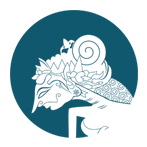Supporting factors of IT business alignment at Indonesian it companies
DOI:
https://doi.org/10.31101/ijhst.v3i3.2424Abstract views 884 times
Keywords:
factors, IT business alignment, SAM, strategic alignmentAbstract
Downloads
References
Alaceva, C., & Rusu, L. (2015). Barriers in achieving business/IT alignment in a large Swedish company: What we have learned? Computers in Human Behavior, 51, 715–728. https://doi.org/10.1016/j.chb.2014.12.007
Ali, S., & Khan, S. U. (2016). Software outsourcing partnership model: An evaluation framework for vendor organizations. Journal of Systems and Software. https://doi.org/10.1016/j.jss.2016.03.069
Aversano, L., Grasso, C., & Tortorella, M. (2016). Managing the alignment between business processes and software systems. Information and Software Technology, 72, 171–188. https://doi.org/10.1016/j.infsof.2015.12.009
Baker, E. W., & Niederman, F. (2014). Integrating the IS functions after mergers and acquisitions: Analyzing business-IT alignment. Journal of Strategic Information Systems. https://doi.org/10.1016/j.jsis.2013.08.002
Beimborn, D., Wagner, H. T., Franke, J., & Weitzel, T. (2007). The influence of alignment on the post-implementation success of a core banking information system: An embedded case study. Proceedings of the Annual Hawaii International Conference on System Sciences. https://doi.org/10.1109/HICSS.2007.541
Belfo, F. P., & Sousa, R. D. (2012). A Critical Review of Luftman´S Instrument for Business-It Alignment. Association of Information Systems (AIS).
Berger, T., Lettner, D., Rubin, J., Grünbacher, P., Silva, A., Becker, M., … Czarnecki, K. (2015). What is a feature? A Qualitative study of features in industrial software product lines. ACM International Conference Proceeding Series, 20-24-July, 16–25. https://doi.org/10.1145/2791060.2791108
BolÃvar-Ramos, M. T., GarcÃa-Morales, V. J., & GarcÃa-Sánchez, E. (2012). Technological distinctive competencies and organizational learning: Effects on organizational innovation to improve firm performance. Journal of Engineering and Technology Management - JET-M, 29(3), 331–357. https://doi.org/10.1016/j.jengtecman.2012.03.006
Chen, L. (2010). Business-IT alignment maturity of companies in China. Information and Management. https://doi.org/10.1016/j.im.2009.09.003
Chumo, K. P. (2016). Information and Knowledge Management Information Systems Strategic Alignment Maturity Levels: Corporate and Project Implementation Perspectives. IISTE, 6(2). Retrieved from https://www.iiste.org/Journals/index.php/IKM/article/viewFile/28716/29479
Chun, R., & Davies, G. (2001). E-reputation: The role of mission and vision statements in positioning strategy. Journal of Brand Management. https://doi.org/10.1057/palgrave.bm.2540031
De Massis, A., Frattini, F., Pizzurno, E., & Cassia, L. (2015). Product innovation in family versus nonfamily firms: An exploratory analysis. Journal of Small Business Management, 53(1), 1–36. https://doi.org/10.1111/jsbm.12068
Ee, O., Abdul Halim, H., & Ramayah, T. (2013). The effects of partnership quality on business process outsourcing success in Malaysia: Key users perspective. Service Business. https://doi.org/10.1007/s11628-012-0152-z
Frost, & Sullivan. (2019). Digital Market Overview: Indonesia.
Henderson, J. C., & Venkatraman, H. (1999). Strategic alignment: Leveraging information technology for transforming organizations. IBM Systems Journal, 38(2.3), 472–484. https://doi.org/10.1147/SJ.1999.5387096
Hinterhuber, A., & Liozu, S. M. (2014). Is innovation in pricing your next source of competitive advantage? Business Horizons, 57(3), 413–423. https://doi.org/10.1016/j.bushor.2014.01.002
Holweg, M., & Pil, F. K. (2012). Outsourcing Complex Business Processes. California Management Review. https://doi.org/10.1525/cmr.2012.54.3.98
Hu, Q., & Huang, C. D. (2005). Aligning IT with Firm Business Strategies Using the Balance Scorecard System. Proceedings of the 38th Hawaii International Conference on System Sciences, 1–10. Hawaii.
Hu, Q., & Huang, C. D. (2006). Using the Balanced Scorecard to Achieve Sustained IT-Business Alignment: A Case Study. Communications of the Association for Information Systems. https://doi.org/10.17705/1cais.01708
Iman, N., & Hartono, J. (2007). Strategic Alignment Impacts on Organizational Performance in Indonesian Banking IndustrY. Gadjah Mada International Journal of Business. https://doi.org/10.22146/gamaijb.5598
Indarti, N., & Kusuma, G. H. (2016). Types of knowledge transferred in family business succession. IEEE International Conference on Industrial Engineering and Engineering Management. https://doi.org/10.1109/IEEM.2016.7797955
Ingenhoff, D., & Fuhrer, T. (2010). Positioning and differentiation by using brand personality attributes. Corporate Communications: An International Journal, 15(1), 83–101. https://doi.org/10.1108/13563281011016859
Jasimuddin, S. M., Klein, J. H., & Connell, C. (2005). The paradox of using tacit and explicit knowledge. Management Decision, 43(1), 102–112. https://doi.org/10.1108/00251740510572515
Kalyani, M., & Prakashan Sahoo, M. (2011). Human Resource Strategy: A Tool of Managing Change for Organizational Excellence. International Journal of Business and Management, 6(8). https://doi.org/10.5539/ijbm.v6n8p280
Kusrini, E., Pharmasetiawan, B., & Risca, P. S. N. (2017). The involvement of organizational culture in BITA at attribute level (Case study for a government institution in developing country). 2017 International Conference on Information Technology Systems and Innovation, ICITSI 2017 - Proceedings. https://doi.org/10.1109/ICITSI.2017.8267917
Lena Ellitan. (2017). The Role of Business Enviromental and Strategy Alignment in the Optimization of Business Performance of Small Scale Manufacturing Companies in Indonesia. World Journal of Research and Review, 5(2), 57–63.
Luftman, J. (2003). Measure Your Business-IT Alignment. Optimize: Business Execution for CIOs Magazine, 26(22), 1–4.
Mason, M. (2010). Sample size and saturation in PhD studies using qualitative interviews. Forum Qualitative Sozialforschung. https://doi.org/10.17169/fqs-11.3.1428
Müller, R., & Turner, R. (2010). Leadership competency profiles of successful project managers. International Journal of Project Management, 28(5), 437–448. https://doi.org/10.1016/j.ijproman.2009.09.003
Orhan, G., Erdoğan, D., & Durmaz, V. (2014). Adopting Mission and Vision Statements by Employees: The Case of TAV Airports. Procedia - Social and Behavioral Sciences, 150, 251–262. https://doi.org/10.1016/j.sbspro.2014.09.051
Özdem, G. (2011). An analysis of the mission and vision statements on the strategic plans of higher education institutions. Kuram ve Uygulamada Egitim Bilimleri.
Putro, E., Meyliana, Hidayanto, A. N., & Prabowo, H. (2018). The alignment factors of business-IT on enterprise architecture : A systematic literature review. Proceedings of 2017 International Conference on Information Management and Technology, ICIMTech 2017. https://doi.org/10.1109/ICIMTech.2017.8273540
Rarick, C. a., & Vitton, J. (1995). Corporate Strategy: Mission Statements Make Cents. Journal of Business Strategy. https://doi.org/10.1108/eb039673
Reich, B. H., & Benbasat, I. (2000). Factors That Influence the Social Dimension of Alignment between Business and Information Technology Objectives. MIS Quarterly. https://doi.org/10.2307/3250980
Riandari, R., & Pharmasetiawan, B. (2017). Indonesian culture impact on business-IT alignment (A case study in Attorney general of Indonesia office). 2017 International Conference on Information Technology Systems and Innovation, ICITSI 2017 - Proceedings. https://doi.org/10.1109/ICITSI.2017.8267910
Sabherwal, R., & Chan, Y. E. (2001). Alignment between Business and IS Strategies: A Study of Prospectors, Analyzers, and Defenders. Information Systems Research. https://doi.org/10.1287/isre.12.1.11.9714
Saptadi, S., Sudirman, I., Samadhi, T. M. A. A., & Govindaraju, R. (2012). Business - IT alignment success framework for manufacturing SMEs (A conceptual model). 2012 IEEE 6th International Conference on Management of Innovation and Technology, ICMIT 2012. https://doi.org/10.1109/ICMIT.2012.6225839
Seman, E. A. A., & Salim, J. (2013). A Model for Business-IT Alignment in Malaysian Public Universities. Procedia Technology, 11, 1135–1141. https://doi.org/10.1016/j.protcy.2013.12.305
Shihab, M. R., & Rahardian, I. (2017). Comparing the approaches of small, medium, and large organisations in achieving IT and business alignment. International Journal of Business Information Systems. https://doi.org/10.1504/IJBIS.2017.081449
Silvius, A. J. (2008). The impact of national cultures on business & IT alignment. Communications of the IIMA.
Silvius, A. J. G., De Haes, S., & Van Grembergen, W. (2009). Exploration of cultural influences on business and IT alignment. Proceedings of the 42nd Annual Hawaii International Conference on System Sciences, HICSS. https://doi.org/10.1109/HICSS.2009.208
Stern, A. A. (1989). Pricing and differentiation strategies. Planning Review, 17(5), 30–34. https://doi.org/10.1108/eb054271
Stevenson, D. H., & Starkweather, J. A. (2010). PM critical competency index: IT execs prefer soft skills. International Journal of Project Management, 28(7), 663–671. https://doi.org/10.1016/j.ijproman.2009.11.008
Tallon, P. P., & Kraemer, K. L. (2007). Fact or Fiction? A Sensemaking Perspective on the Reality Behind Executives’ Perceptions of IT Business Value. Journal of Management Information Systems, 24(1), 13–54. https://doi.org/10.2753/MIS0742-1222240101
Thompson, K. N., & Coe, B. J. (1997). Gaining sustainable competitive advantage through strategic pricing: selecting a perceived value price. Pricing Strategy and Practice, 5(2), 70–79. https://doi.org/10.1108/09684909710163629
Tuarob, S., & Tucker, C. S. (2015). Quantifying product favorability and extracting notable product features using large scale social media data. Journal of Computing and Information Science in Engineering, 15(3). https://doi.org/10.1115/1.4029562
Velcu, O. (2010). Strategic alignment of ERP implementation stages: An empirical investigation. Information & Management, 47(3), 158–166. https://doi.org/10.1016/j.im.2010.01.005
Wang, L., & Kess, P. (2006). Partnering motives and partner selection. International Journal of Physical Distribution & Logistics Management, 36(6), 466–478. https://doi.org/10.1108/09600030610677410
Wen-Cheng, W., Chien-Hung, L., & Ying-Chien, C. (2011). Types of Competitive Advantage and Analysis. International Journal of Business and Management, 6(5). https://doi.org/10.5539/ijbm.v6n5p100
Yuliansyah, Y. (2015). Attributes Influencing Strategic Alignment in the Service Sector: An Indonesian Banking Sector Case Study. International Journal of Business, Economics and Management. https://doi.org/10.18488/journal.62/2015.2.2/68.2.34.48
Zaichkowsky, J. L. (2010). Strategies for distinctive brands. Journal of Brand Management, Vol. 17, pp. 548–560. https://doi.org/10.1057/bm.2010.12
Downloads
Published
How to Cite
Issue
Section
License
International Journal of Health Science and Technology allows readers to read, download, copy, distribute, print, search, or link to its articles' full texts and allows readers to use them for any other lawful purpose. The journal allows the author(s) to hold the copyright without restrictions. Finally, the journal allows the author(s) to retain publishing rights without restrictions
- Authors are allowed to archive their submitted article in an open access repository
- Authors are allowed to archive the final published article in an open access repository with an acknowledgment of its initial publication in this journal

This work is licensed under a Creative Commons Attribution-ShareAlike 4.0 Generic License.











